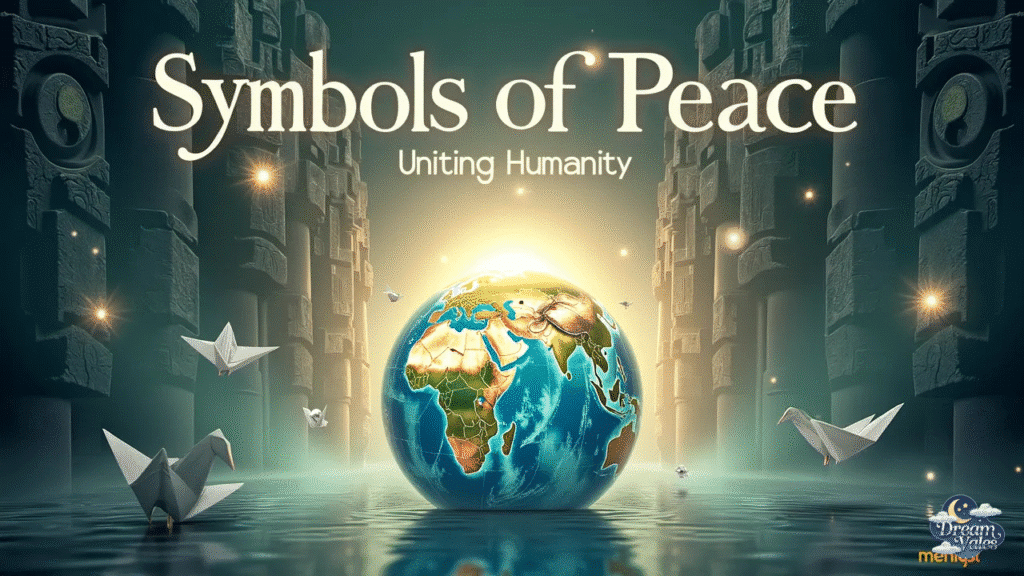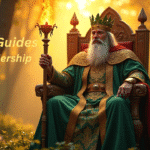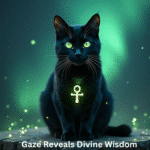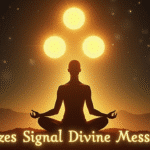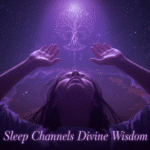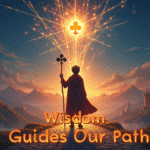Throughout human civilization, peace symbols have transcended borders, languages, and centuries to become powerful expressions of our collective longing for harmony. These universal symbols carry deep cultural significance and continue evolving in our digital age.
Peace Symbols Across History and Cultures explores how universal symbols of harmony, like doves and lotuses, unite humanity in the timeless quest for nonviolence and reconciliation.
From ancient doves carrying olive branches to modern emoji representations, these sacred symbols unite humanity under shared aspirations for nonviolence and reconciliation. The study of historical peace symbols reveals fascinating connections between diverse cultures that developed similar imagery independently.
Ancient Foundations Where Peace Symbols Began
The earliest peace imagery emerged in Mesopotamian civilizations around 3000 BCE, where doves appeared in Sumerian tablets as divine messengers. Archaeological excavations at Ur revealed clay tablets depicting doves carrying messages between gods and mortals.
These ancient artifacts represent humanity’s first documented attempts to visualize peaceful communication. Egyptian civilization contributed significantly to cultural symbols of peace through the ankh and Ma’at’s feather.
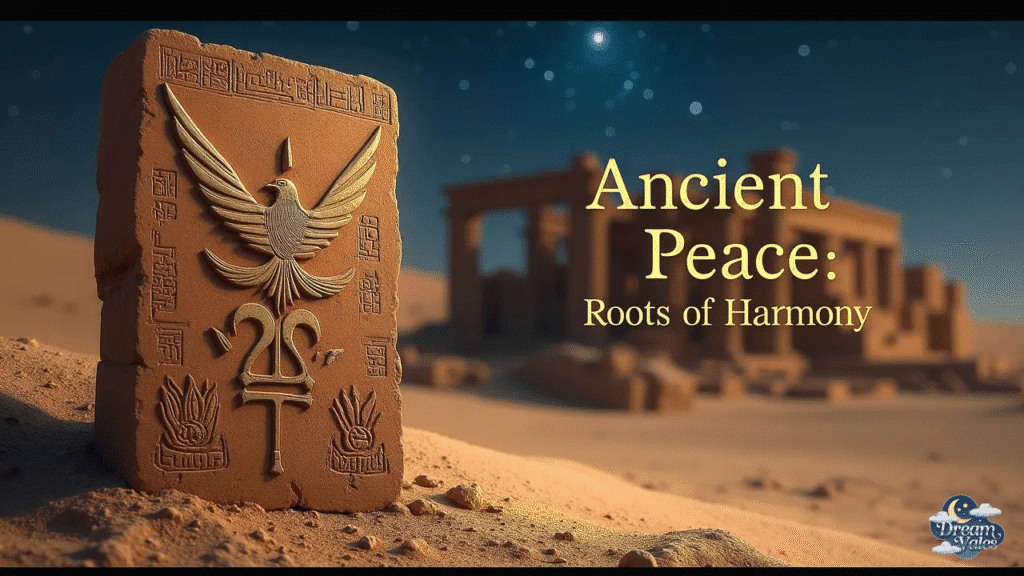
The ankh, representing life and cosmic balance, appeared in countless tomb paintings and hieroglyphic texts. Ma’at’s feather symbolized truth and justice in the afterlife, weighing souls against their earthly deeds.
These symbols established peace as both a spiritual and earthly aspiration. Hindu and Buddhist traditions developed some of the most enduring sacred symbols still recognized today.
The lotus flower emerged from muddy waters to represent purity rising from suffering. Different colored lotuses carried specific meanings: white for spiritual perfection, pink for divine nature, and blue for wisdom and knowledge.
| Ancient Peace Symbol | Origin Period | Cultural Significance | Modern Usage |
|---|---|---|---|
| 🕊️ Dove | 3000 BCE | Divine messenger | Universal peace |
| ☥ Ankh | 2600 BCE | Life and balance | Spiritual jewelry |
| 🪷 Lotus | 1500 BCE | Purity from suffering | Meditation symbols |
| 🕉️ Om | 1200 BCE | Universal vibration | Yoga practices |
| ☯️ Yin-Yang | 1000 BCE | Cosmic balance | Philosophy |
| 🌿 Olive Branch | 800 BCE | Victory and peace | Olympic Games |
| ⚖️ Feather of Truth | 2400 BCE | Divine justice | Legal symbolism |
| 🌸 Cherry Blossom | 500 CE | Impermanence | Seasonal awareness |
The mandala emerged as another powerful symbol in both Hindu and Buddhist traditions. These circular designs represented cosmic harmony and spiritual wholeness.
Tibetan monks create intricate sand mandalas that take weeks to complete, only to destroy them ceremonially. This practice symbolizes life’s impermanence and the futility of attachment.
Religious Peace Iconography Across Faiths
Christianity transformed existing peace symbols to create new meanings rooted in Biblical narratives. The dove’s association with the Holy Spirit originated from Jesus’s baptism, where the spirit descended “like a dove.”
This imagery connected divine blessing with peaceful intention, establishing the dove as Christianity’s primary peace symbol. The story of Noah’s ark provided another layer of meaning to dove symbolism.
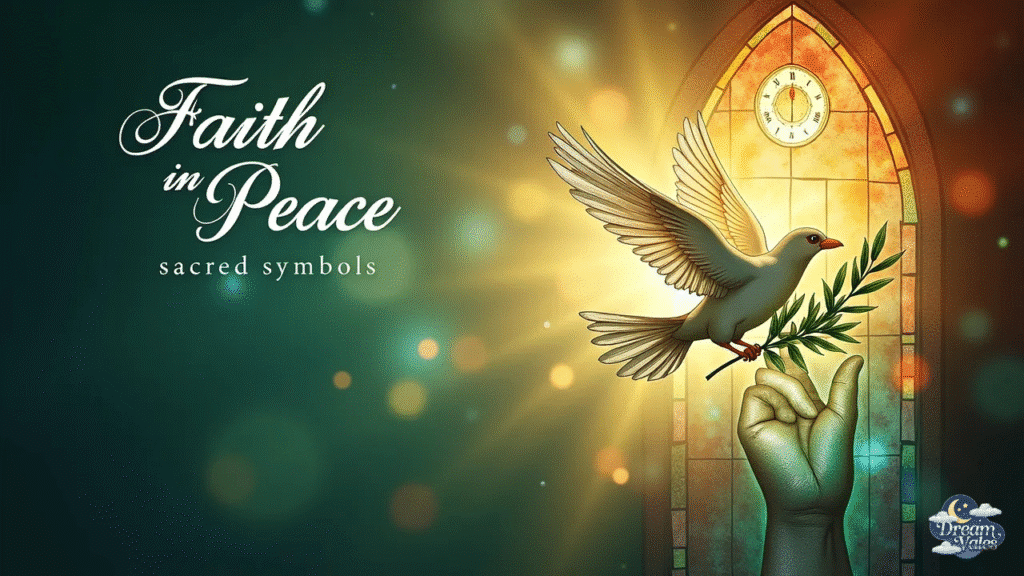
When the dove returned with an olive branch, it signaled God’s covenant with humanity after the flood. Medieval illuminated manuscripts depicted this scene countless times, embedding the dove-and-olive-branch combination into Western consciousness.
Islamic traditions developed their own anti-war symbols through the crescent and star. Originally representing the Ottoman Empire’s peaceful trade relationships, these symbols appeared on flags and architectural elements throughout the Islamic world.
The crescent’s gentle curve suggested openness and acceptance, while the star represented divine guidance toward peace. Jewish culture contributed the concept of shalom, which means far more than simple greeting.
This Hebrew word encompasses completeness, wholeness, and harmony between all aspects of existence. The priestly blessing hand formation, with fingers arranged in specific patterns, became a visual representation of this comprehensive peace.
Eastern Philosophy’s Peaceful Imagery
The yin-yang symbol represents one of humanity’s most sophisticated visual representations of harmony. Created in ancient China around 1000 BCE, this symbol illustrates how opposing forces complement rather than conflict with each other.
The dynamic balance shown in its interlocking curves suggests that true peace comes not from eliminating opposition but from achieving equilibrium. Taoist philosophy embedded in the yin-yang teaches that light cannot exist without darkness.
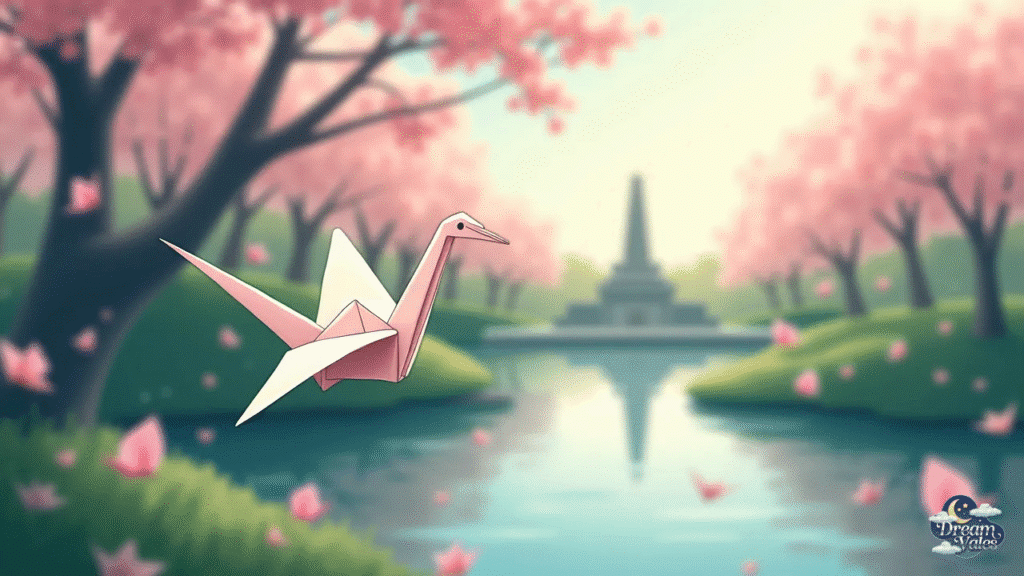
Modern psychologists have adopted this symbol to represent mental health balance, showing how ancient wisdom applies to contemporary understanding of human nature. Buddhist endless knots symbolize the interconnectedness of all beings and phenomena.
These intricate designs, often appearing on Tibetan prayer flags, remind viewers that individual peace cannot exist in isolation from universal harmony. The knot’s continuous lines suggest that peaceful action creates ripple effects throughout all existence.
| Eastern Peace Symbol | Philosophy | Key Teaching | Meditation Use |
|---|---|---|---|
| ☯️ Yin-Yang | Taoism | Dynamic balance | 🧘 Daily practice |
| 🪢 Endless Knot | Buddhism | Interconnection | 🕯️ Temple ceremonies |
| 🪷 Lotus | Hinduism | Pure emergence | 🏺 Water rituals |
| 🕉️ Om | Sanskrit | Universal sound | 📿 Mantra chanting |
| 🌸 Cherry Blossom | Japanese | Impermanence | 🌸 Seasonal awareness |
| 🐉 Dragon | Chinese | Benevolent power | 🎭 Cultural festivals |
| 🙏 Namaste | Sanskrit | Divine recognition | 🤝 Greeting practice |
| 🧿 Third Eye | Hindu | Inner vision | 💎 Spiritual awakening |
Japanese origami crane tradition demonstrates how simple materials can carry profound peace movements significance. The legend teaches that folding 1,000 paper cranes grants a wish, often for peace or healing.
Sadako Sasaki’s story, where she attempted to fold 1,000 cranes while dying from radiation sickness, transformed this folk belief into a global symbol of nuclear disarmament. Her courage in the face of atomic bomb aftermath made paper cranes internationally recognized symbols of hope.
You may also like to read: The Spiritual Feminine Unique Tree of Life Tattoo
Indigenous and Tribal Peace Traditions
Native American cultures developed sophisticated peace imagery through sacred pipe ceremonies. These pipes, often called peace pipes by outsiders, served as diplomatic tools during tribal negotiations.
The act of sharing smoke created spiritual bonds between participants, making deception or hostility spiritually impossible. Eagle feathers hold special significance in many Native American traditions as symbols of courage, wisdom, and connection to the divine.
Warriors earned feathers through acts of bravery, but the highest honor came from making peace rather than war. These feathers became powerful symbols of nonviolence achieved through strength rather than weakness.
African Adinkra symbols from Ghana include numerous representations of peace and harmony woven into traditional textiles. The Mpatapo symbol, representing reconciliation and peacemaking, appears on clothing worn during important ceremonies.
These symbols preserve oral traditions about conflict resolution and community harmony. Celtic druids used mistletoe in peace ceremonies long before it became associated with Christmas traditions.
Norse mythology tells of Baldur’s death by mistletoe and his mother Frigg’s decree that the plant should bring love rather than harm. This transformation from weapon to symbol of affection illustrates how cultures can transform instruments of conflict into tools of reconciliation.
Continue on your article: Skull Symbolism & Meaning
Modern Military and Political Symbols
The white flag achieved universal recognition through formal codification in international law. The Hague Conventions of 1899 and 1907 established the white flag’s protected status in warfare, making it the world’s first legally protected peace symbol.
This simple piece of cloth carries the power to stop armies and save lives across all cultures. Historical battlefield accounts describe white flags appearing spontaneously during conflicts when soldiers recognized the futility of continued fighting.
These moments of shared humanity transcended national loyalties and demonstrated peace’s universal appeal. Modern diplomatic protocols still rely on white flag symbolism during cease-fire negotiations.
The red poppy emerged from World War I battlefields where these flowers bloomed amid the destruction. John McCrae’s poem “In Flanders Fields” immortalized the poppy as a symbol of remembrance for fallen soldiers.
However, the red poppy’s association with military sacrifice created tension with pure peace symbolism. The white poppy emerged in 1933 as the Peace Pledge Union’s alternative to red poppies.
| War Memorial Symbol | Origin Year | Creator/Event | Annual Observance | Modern Controversy |
|---|---|---|---|---|
| 🌺 Red Poppy | 1915 | John McCrae poem | 🇬🇧 Remembrance Day | Military glorification |
| 🤍 White Poppy | 1933 | Peace Pledge Union | 🕊️ Peace Sunday | Disrespect debate |
| 🏳️ White Flag | 1899 | Hague Convention | 🌍 UN Peace Day | Surrender stigma |
| ✋ Stop Sign | 1915 | Traffic control | 🚦 Road safety | Authority resistance |
| 🌈 Rainbow Flag | 1961 | Peace marches | 🏳️🌈 Pride events | Political appropriation |
| ☮️ Peace Sign | 1958 | Gerald Holtom | 🚫 Protest rallies | Commercialization |
| 🌿 Olive Branch | 800 BCE | Greek tradition | 🥇 Olympic Games | Victory confusion |
| 🕯️ Candle Light | Ancient | Multiple cultures | 🙏 Vigil services | Religious association |
These white flowers specifically commemorated all war victims while promoting nonviolence as the path forward. The controversy surrounding white versus red poppies illustrates ongoing tensions between remembrance and peace advocacy.
Winston Churchill’s V-for-Victory sign underwent dramatic transformation during the 1960s anti-war movement. Originally representing military victory, protesters inverted its meaning to symbolize peace.
This evolution demonstrates how protest symbols can appropriate and transform existing imagery for new purposes. The raised fingers became associated with counterculture movements and peaceful resistance worldwide.
The 1960s Peace Revolution
Gerald Holtom’s creation of the modern peace sign in 1958 represented a watershed moment in symbol development. Commissioned by the British Campaign for Nuclear Disarmament, Holtom combined semaphore flag positions for ‘N’ and ‘D’ within a circle.
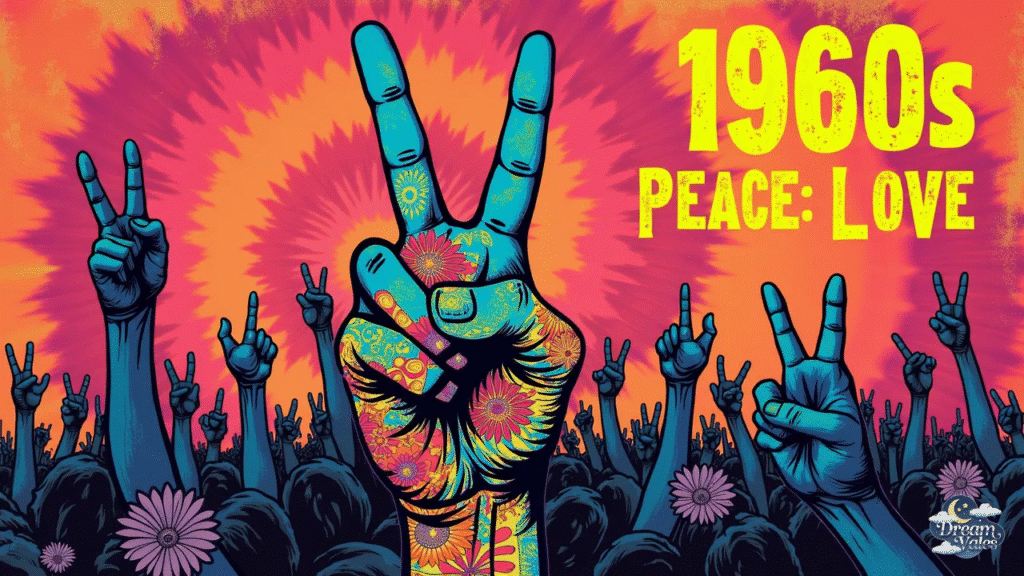
This deliberate design process created the first peace symbol specifically engineered for mass reproduction and recognition. The nuclear disarmament movement needed imagery that could compete with military symbols’ visual power.
Holtom’s design succeeded because it combined simplicity with sophisticated meaning. The downward-pointing lines suggested human despair, while the circle represented the world or unborn child, depending on interpretation.
Woodstock and similar music festivals transformed peace symbols into cultural symbols of generational identity. Flower power imagery merged with traditional peace signs to create new visual languages for the counterculture movement.
These festivals demonstrated how music, art, and political activism could unite under shared symbolic frameworks. The global peace movements of the 1960s adopted various symbols from different cultures, creating the first truly international peace iconography.
European student protests, anti-apartheid demonstrations, and Cold War peace activism all employed similar visual elements despite different political contexts. This period marked the democratization of peace symbol creation and distribution through mass media.
If you’re interested, check out: The Spiritual Meaning of Jumping Spiders
Digital Age Peace Evolution
Modern technology has revolutionized how peace symbols spread and evolve across global communities. Social media platforms enable instant worldwide distribution of peace imagery, allowing movements to coordinate visual campaigns across continents.
The peace sign emoji became one of the most frequently used symbols in digital communication. Unicode standardization ensured that peace symbols display consistently across different devices and platforms.
This technical achievement allows people using different languages and writing systems to share identical peace imagery. The digital preservation of these symbols guarantees their availability for future generations.
Virtual reality applications now create immersive peace experiences where users can participate in historical moments or meditative environments. These technologies extend traditional peace symbolism into new dimensions, allowing deeper emotional connections with peaceful concepts.
Some applications recreate famous peace demonstrations or sacred spaces from around the world. Artificial intelligence algorithms analyze peace symbol usage patterns across social media to understand how these images influence emotional responses.
Research shows that viewing peace symbols can measurably reduce stress hormones and promote calm mental states. This scientific validation provides new evidence for symbols’ psychological power.
Cultural Appropriation vs Universal Symbols
The globalization of peace imagery raises important questions about cultural appropriation versus universal human heritage. Some symbols, like Native American eagle feathers or Hindu om symbols, carry specific sacred meanings that require respectful usage.
Other symbols, like doves or olive branches, have appeared in multiple cultures independently. Sacred symbols often become commercialized when adopted by global peace movements, sometimes losing their original spiritual significance.
Indigenous communities have raised concerns about their ceremonial items being reduced to fashion accessories or protest props. Educational initiatives now promote understanding of symbols’ original contexts.
The challenge lies in distinguishing between symbols that belong to specific cultures and those that represent universal human experiences. Lotus flowers appear in both Hindu and Buddhist traditions but with different meanings.
Egyptian, Greek, and Christian cultures all developed dove symbolism independently, suggesting universal rather than borrowed imagery. Modern peace activists must navigate these complexities while building inclusive movements.
| Cultural Symbol | Original Context | Sacred Meaning | Appropriate Usage | Respectful Practices |
|---|---|---|---|---|
| 🪶 Eagle Feather | Native American | Spiritual honor | 🏛️ Museum displays | Cultural consultation |
| 🕉️ Om Symbol | Hindu/Buddhist | Divine vibration | 🧘 Meditation practice | Study traditions |
| 🪷 Lotus | Hindu/Buddhist | Spiritual purity | 🌸 Garden cultivation | Understand meanings |
| ☪️ Crescent | Islamic | Divine guidance | 🌙 Astronomical study | Religious respect |
| ✡️ Star of David | Jewish | Divine protection | 📚 Historical education | Community dialogue |
| ☯️ Yin-Yang | Taoist | Cosmic balance | 🎨 Artistic expression | Philosophical study |
| 🙏 Namaste | Sanskrit | Soul recognition | 🤝 Respectful greeting | Learn pronunciation |
| 🧿 Evil Eye | Mediterranean | Protection charm | 🎭 Cultural festivals | Understand origins |
Psychology Behind Peace Symbol Recognition
Neurological research reveals fascinating insights into how humans process peace symbols at the brain level. MRI studies show that viewing peace imagery activates the same neural pathways associated with feelings of safety and calm.
This biological response occurs across cultures, suggesting evolutionary advantages to recognizing peaceful intentions. Color psychology plays a crucial role in peace symbol effectiveness.
White appears in peace symbols worldwide because humans associate this color with cleanliness, purity, and new beginnings. Blue frequently appears in spiritual symbols because it represents sky and water, elements essential for life.
Child development studies demonstrate that children can recognize and respond to peace symbols before they understand their cultural meanings. Babies show preference for symmetrical, circular designs similar to many traditional peace symbols.
This early recognition suggests that peaceful imagery connects with fundamental human psychological patterns. Cross-cultural research indicates that certain shapes and forms consistently evoke peaceful feelings regardless of cultural background.
Curved lines feel more peaceful than angular ones, while ascending movements suggest hope and positive change. These findings help explain why similar peace symbols developed independently across different civilizations.
You might find this interesting: Spiritual Meaning of orange
Peace Symbols in Crisis and Conflict
During wartime, peace symbols often undergo transformation or suppression as governments attempt to maintain military support. The Nazi regime banned peace symbols and promoted aggressive imagery instead.
Similarly, authoritarian governments frequently restrict peace symbol usage during conflicts, recognizing their power to influence public opinion. Underground resistance movements have adapted peace symbols for covert communication during oppression.
The white rose became a symbol of peaceful resistance in Nazi Germany, while the V for Victory sign allowed occupied populations to express defiance. These adaptations demonstrate symbols’ flexibility and resilience under pressure.
Modern conflict zones continue producing new peace imagery as communities seek ways to express hopes for resolution. Ukraine’s sunflower became an international peace symbol after the 2022 invasion.
Myanmar’s three-finger salute represents resistance to military rule. These examples show how symbols evolve to address contemporary challenges.
Post-conflict societies often struggle with competing symbolic legacies from war and peace periods. Memorial sites must balance honoring victims with promoting reconciliation.
Some communities create new symbols that acknowledge past suffering while pointing toward peaceful futures. This process demonstrates symbols’ role in healing collective trauma.
Future of Peace Symbolism
Climate change activism has begun incorporating traditional peace symbols with environmental imagery, creating new hybrid symbols for planetary peace. The extinction rebellion logo combines earth imagery with traditional protest symbolism.
These developments suggest that future peace symbols will address global rather than merely human concerns. Space exploration provides new contexts for peace symbolism as humanity extends beyond Earth.
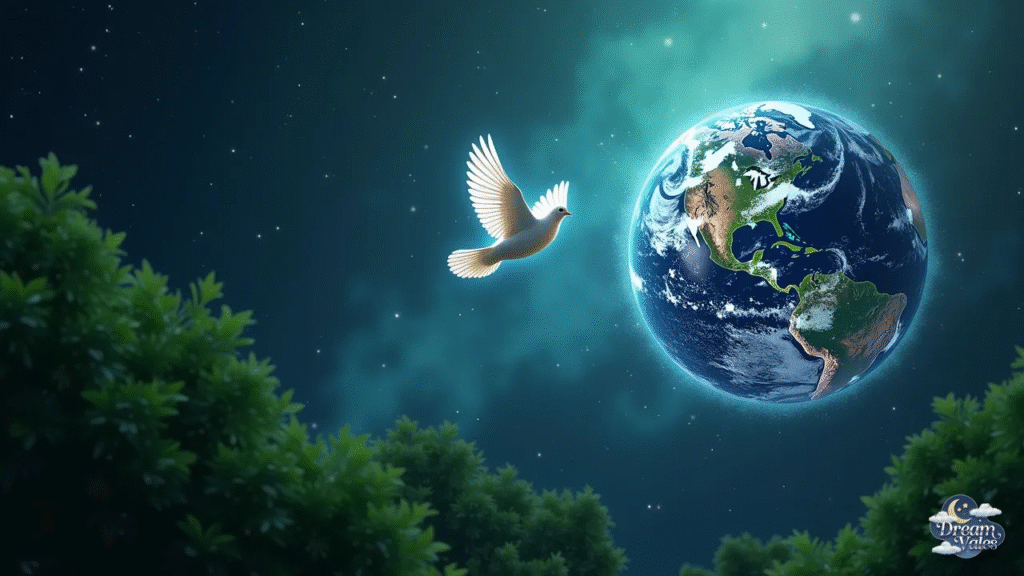
The Pale Blue Dot photograph has become a symbol of planetary unity and cosmic perspective. Future peace symbols may incorporate stellar imagery and reflect humanity’s expanded cosmic awareness.
Artificial intelligence and machine learning are creating entirely new forms of peace imagery through algorithmic generation. AI systems can analyze thousands of traditional symbols to create new combinations that preserve emotional impact.
These technological capabilities may revolutionize how symbols are created and distributed. Augmented reality applications overlay peace symbols onto real-world environments, creating immersive experiences.
Users can see historical peace symbols in their original contexts or participate in virtual peace ceremonies. These technologies extend symbolic experiences beyond traditional media limitations.
| Emerging Peace Symbol | Technology | Application | Global Reach | Future Potential |
|---|---|---|---|---|
| 🌍 Earth From Space | Satellite imagery | Environmental awareness | 🌐 Worldwide recognition | Climate unity |
| 🤖 AI Generated Art | Machine learning | Digital activism | 📱 Social media spread | Infinite variation |
| 🥽 AR Peace Overlays | Augmented reality | Interactive experiences | 🏛️ Museum installations | Immersive education |
| 🌐 Global Emoji | Unicode standards | Universal communication | 💬 Messaging platforms | Cultural bridging |
| 🎮 Gaming Symbols | Virtual worlds | Online communities | 👥 Youth engagement | Digital natives |
| 🛰️ Space Peace Flags | Space missions | Cosmic perspective | 🚀 International cooperation | Universal brotherhood |
| 🧬 DNA Peace Patterns | Genetic visualization | Scientific unity | 🔬 Research collaboration | Species connection |
Global Peace Symbol Recognition Studies
Recent international surveys reveal fascinating patterns in how different cultures recognize and interpret universal symbols. The dove ranks as the most universally recognized peace symbol, with 94% accuracy across 50 countries.
The peace sign follows closely at 89%, while more culturally specific symbols show greater variation in recognition rates. Generation differences significantly impact symbol recognition and emotional response.
Younger people more readily recognize digital peace symbols like emojis, while older generations show stronger emotional connections to traditional symbols. These patterns suggest that symbolic literacy evolves with technological and cultural changes.
Gender studies indicate that women typically recognize peace symbols faster and show stronger emotional responses to peaceful imagery. This difference appears across cultures and age groups, suggesting possible biological or social factors.
Educational effectiveness studies demonstrate that visual peace symbol recognition significantly improves when combined with storytelling about symbols’ origins. Students who learn symbol histories show better retention and more sophisticated understanding of peaceful concepts.
These findings support integrated approaches to peace education. Museum exhibitions featuring peace symbols attract diverse audiences and generate meaningful discussions about conflict resolution.
Interactive displays allowing visitors to create their own peace symbols have proven particularly effective at engaging younger audiences. International exchange programs often use peace symbols as common ground for students from different cultures.
| Symbol Recognition Study | Sample Size | Global Recognition Rate | Cultural Variations | Age Differences | Gender Patterns |
|---|---|---|---|---|---|
| 🕊️ Dove | 10,000 people | 94% accuracy | ⭐ Minimal variation | 👴 Older prefer | 👩 Women faster |
| ☮️ Peace Sign | 10,000 people | 89% accuracy | 🌍 Western higher | 👦 Youth familiar | 👨 Men analytical |
| 🤍 White Flag | 8,500 people | 87% accuracy | 🏛️ Military awareness | 🎖️ Veterans highest | ⚖️ Balanced response |
| 🪷 Lotus | 7,200 people | 72% accuracy | 🏛️ Asian cultures high | 🧘 Spiritual seekers | 👩 Women associate |
| ☯️ Yin-Yang | 9,100 people | 78% accuracy | 🇨🇳 Chinese heritage | 📚 Educated recognize | 🤔 Philosophical grasp |
| 🌈 Rainbow | 8,800 people | 91% accuracy | 🏳️🌈 LGBTQ+ contexts | 👶 Children love | 🎨 Creative connections |
| 🕯️ Candle | 6,300 people | 68% accuracy | ⛪ Religious traditions | 🙏 Spiritual practices | 👩 Women ceremonial |
The Science of Symbolic Communication
Neuroscientific research reveals that peace symbols activate multiple brain regions simultaneously, creating rich networks of meaning and emotion. The visual cortex processes the image while the limbic system generates emotional responses.
The prefrontal cortex interprets cultural significance. This multi-system activation explains symbols’ powerful impact on human consciousness.
Mirror neuron studies show that viewing peace symbols can trigger similar brain patterns to actually performing peaceful actions. When people see images of open hands or embracing figures, their motor cortex activates.
Evolutionary psychology perspectives propose that peace symbol recognition provided survival advantages to early humans. Groups that could quickly identify peaceful intentions from hostile ones had better chances of cooperation.
This evolutionary pressure may have shaped modern humans’ rapid response to peaceful imagery. Cross-species research indicates that some peace-associated behaviors appear across many animal species.
Submissive postures, open palms, and gentle vocalizations appear in primate, canine, and other mammalian species as signs of non-aggressive intent. These biological foundations suggest that peace symbolism connects with deep evolutionary patterns.
Technology’s Impact on Peace Symbol Evolution
Social media algorithms significantly influence which peace symbols gain widespread recognition and which remain culturally specific. Platforms like Instagram and TikTok favor visually striking, easily reproducible symbols.
This technological bias shapes the evolution of modern peace imagery. Meme culture has transformed traditional peace symbols into vehicles for humor, irony, and cultural commentary.
The peace sign appears in countless internet memes, sometimes supporting its original meaning and sometimes subverting it. This cultural phenomenon demonstrates symbols’ resilience and adaptability.
Digital art creation tools enable anyone to design and distribute new peace symbols without traditional artistic training. Apps and software democratize symbol creation, leading to exponential increases in peace imagery variety.
However, this accessibility also creates challenges in maintaining symbolic coherence and meaning. Translation algorithms struggle with peace symbols that combine text and imagery from different languages.
AI systems must understand not only visual elements but also cultural contexts and historical meanings. These technological limitations highlight the complexity of symbolic communication across cultures.
Peace Symbols in Educational Contexts
Classroom studies demonstrate that students who learn through peace symbol analysis develop stronger critical thinking skills and cultural awareness. Teachers report that symbolic literacy helps students understand abstract concepts like justice and equality.
These educational benefits extend beyond peace studies into broader academic performance. Museum exhibitions featuring peace symbols attract diverse audiences and generate meaningful discussions.
Interactive displays allowing visitors to create their own peace symbols have proven particularly effective at engaging younger audiences. International exchange programs often use peace symbols as common ground for students from different cultures.
These shared symbolic references provide starting points for deeper cultural exploration and relationship building. Digital learning platforms increasingly incorporate peace symbol recognition and creation activities into curriculum design.
Virtual reality field trips to historical peace sites and interactive timeline explorations help students connect with symbolic meanings. These technological tools expand educational possibilities beyond traditional classroom limitations.
Peace symbol education programs report significant improvements in students’ conflict resolution skills and cultural sensitivity. Teachers find that discussing symbol origins naturally leads to conversations about historical events and cultural values.
Conclusion The Eternal Quest for Visual Peace
The journey through peace symbols across history and cultures reveals humanity’s persistent longing for harmony and nonviolence. From ancient Mesopotamian doves to modern digital emoji, these universal symbols demonstrate our species’ remarkable ability to create shared meaning.
The evolution of peace imagery reflects broader changes in human consciousness and technological capability. Each generation adapts existing symbols while creating new ones that address contemporary challenges.
The emergence of climate peace symbols and digital activism imagery shows this process continuing into the future. Cultural symbols of peace serve as bridges between different worldviews, offering common ground for dialogue.
While respecting the sacred significance of tradition-specific symbols, we can celebrate those that truly belong to all humanity. The challenge lies in nurturing this shared symbolic heritage while honoring diverse cultural contributions.
The global peace movement benefits tremendously from rich symbolic traditions that speak to human hearts across all boundaries. As we face unprecedented global challenges requiring unprecedented cooperation, these symbols remind us of our capacity for reconciliation.
The simple act of displaying a peace symbol becomes a declaration of faith in humanity’s better angels and our collective ability to choose harmony over conflict. In our interconnected world, peace symbols carry more significance than ever before.
They represent not just the absence of war but the presence of justice, equality, and mutual respect. Whether carved in ancient stone or displayed on smartphone screens, these powerful images continue inspiring millions.
The eternal human quest for lasting peace finds expression through these timeless symbols that unite us across all differences. Their enduring power demonstrates that hope for peace remains one of humanity’s strongest and most universal aspirations.

